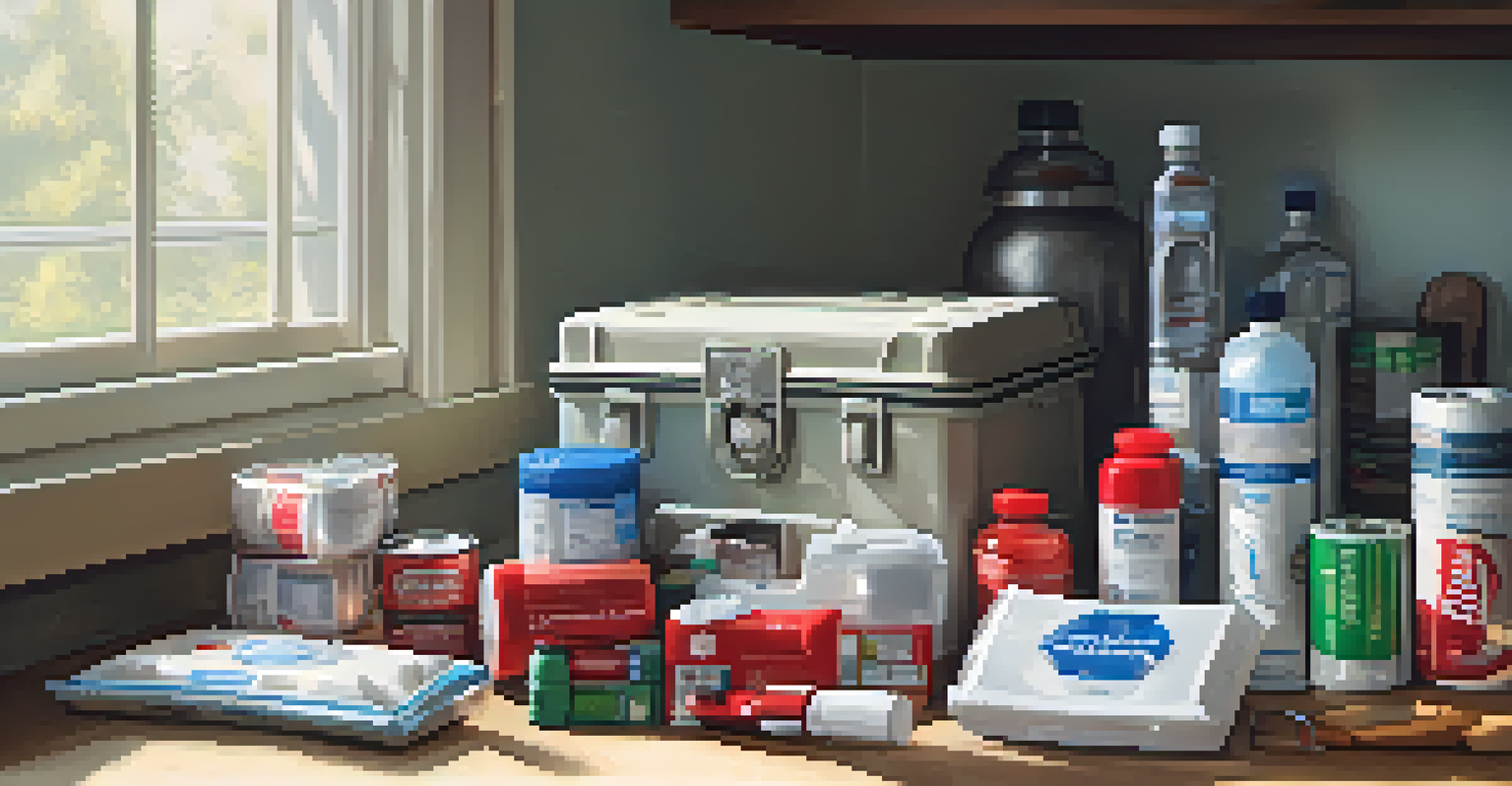How NYC Residents Can Create Effective Emergency Plans

Understanding the Importance of Emergency Plans
In a bustling city like New York, being prepared for emergencies is crucial. With its dense population and various potential hazards, having a solid emergency plan can make all the difference. It’s not just about protecting yourself; it’s about ensuring the safety of your loved ones and your community.
By failing to prepare, you are preparing to fail.
Think of an emergency plan as your city's lifeline. Just like a well-planned subway route helps you navigate the city, an emergency plan guides you through unexpected situations. Whether it’s a natural disaster, a power outage, or a health crisis, knowing what to do ahead of time can alleviate stress when every second counts.
Moreover, having an emergency plan fosters a sense of community. By sharing your plans with neighbors, you create a network of support that can be invaluable in times of crisis. This collaboration not only enhances individual preparedness but also strengthens the resilience of the entire neighborhood.
Assessing Potential Risks in Your Area
New York City faces unique challenges, from hurricanes and blizzards to man-made emergencies. To create an effective emergency plan, start by assessing the risks specific to your area. Local government websites often provide valuable information about historical events and potential hazards.

For instance, if you live in a flood-prone neighborhood, understanding evacuation routes and shelter locations is essential. This knowledge empowers you to act quickly when a weather alert sounds. Similarly, being aware of nearby construction sites or industrial areas can help you prepare for chemical spills or other emergencies.
Emergency Plans Save Lives
Having a solid emergency plan not only protects you but also ensures the safety of your loved ones and community.
Remember, being informed is the first step toward preparedness. By understanding the risks, you can tailor your emergency plan to effectively address the challenges specific to your community, ensuring you and your family stay safe.
Creating a Family Communication Plan
When emergencies strike, communication can quickly become chaotic. That's why establishing a family communication plan is a vital part of your emergency preparedness. Start by deciding on a designated meeting place where everyone can gather if you’re separated during an emergency.
In the midst of chaos, there is also opportunity.
In addition to a physical meeting point, make sure everyone knows how to contact each other. Consider using text messages or social media, as phone lines can become congested during emergencies. Designate an out-of-town contact who can relay information if local connections are disrupted.
Regularly review and practice your communication plan with your family. This practice not only builds confidence but also ensures everyone knows their role during an emergency. Just like rehearsing for a school play, being prepared will make you feel more secure when the spotlight shines on you.
Establishing an Emergency Kit
An emergency kit is your go-to resource when disaster strikes. It should contain essential items that can sustain you and your family for at least 72 hours. Start by gathering non-perishable foods, water, first-aid supplies, flashlights, and batteries, ensuring you have enough to meet your family's specific needs.
Don’t forget to include important documents in your kit, such as identification and insurance papers. Keeping these in a waterproof container can save you a lot of hassle during an emergency. Also, consider adding personal items like medications or baby supplies, so you’re fully prepared for any scenario.
Assess Risks for Better Preparedness
Assessing local risks helps tailor your emergency plan to effectively address specific challenges in your area.
Regularly check and update your emergency kit to ensure everything is in working order and within expiration dates. Think of it as a safety net; the more prepared you are, the less you’ll have to worry when an emergency occurs.
Planning for Evacuations and Safe Routes
In some emergencies, evacuation may be the safest option. Familiarize yourself with the evacuation routes in your area, especially if you live in a high-risk zone. Local authorities often provide maps and guidelines, which can be invaluable during a crisis.
Practice your evacuation plan with your family to ensure everyone knows the best routes to take. It’s also wise to have a backup plan in case your primary route is blocked. This way, you won’t be caught off guard when the time comes to leave.
Additionally, consider transportation options if you don’t own a vehicle. Research public transit options or ride-sharing services that may be available during emergencies. Being proactive about your evacuation plan can make a stressful situation much easier to navigate.
Staying Informed During Emergencies
In today's digital age, staying informed during an emergency is more accessible than ever. Make sure you have reliable sources of information, such as local news outlets, social media updates, and official government notifications. These resources can provide real-time updates and instructions during a crisis.
Consider downloading emergency apps that can alert you to nearby dangers, weather updates, and emergency services. For NYC residents, the Notify NYC app is a great tool to receive alerts about emergencies in your area.
Community Engagement is Key
Collaborating with neighbors enhances individual preparedness and builds a supportive network during crises.
Staying informed not only helps you respond effectively but also allows you to assist others in your community. Knowledge is power, especially when time is of the essence, so make it a priority to keep yourself updated.
Engaging with Your Community for Preparedness
Community engagement plays a crucial role in emergency preparedness. By collaborating with neighbors and local organizations, you can create a more resilient community. Participate in local workshops or meetings focused on emergency preparedness, which often provide valuable information and resources.
Consider forming a neighborhood group to discuss emergency planning together. This collaboration can lead to shared resources, such as bulk buying supplies or organizing group drills. It’s also a great opportunity to build relationships, creating a support network when you need it most.

Remember, you’re not alone in this. Engaging with your community can transform individual preparedness into collective resilience, making your neighborhood a safer place for everyone.